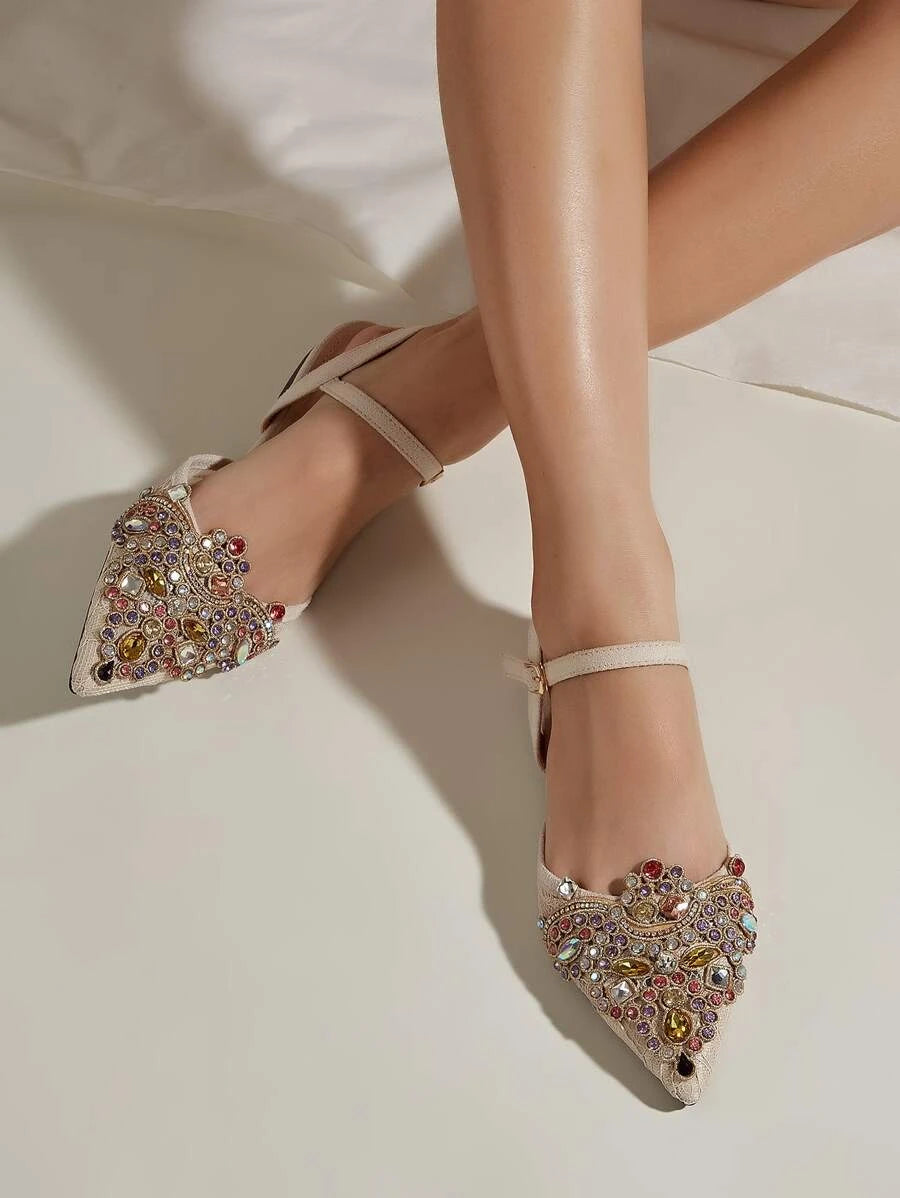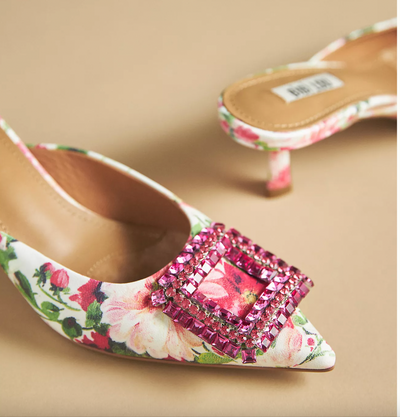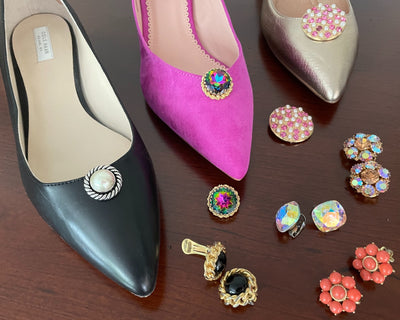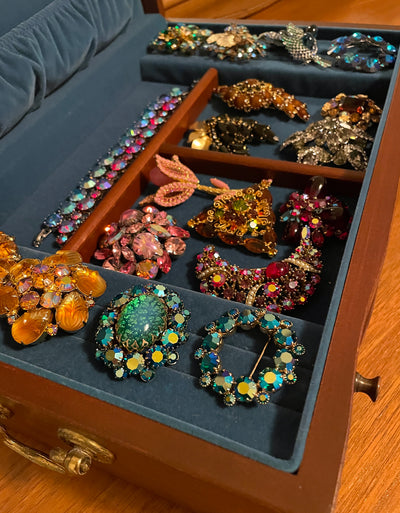Women who have never worn-pointed-toe shoes might automatically think that because the shoe ends in a point, their toes will be squished. This is not true: The pointed section extends past the toes, so a woman’s toes are not inside of the point. It’s essentially empty and what gives the shoe its fashionable aesthetic. A pointed-toe on a flat, heel, boot, pump, or kitten heel provides elegance and style.
The point itself can be one-half inch long (beyond the toes) or up to three inches (difficult to walk in without worrying about tripping).

"Extreme" pointed-toe stilettos. Pointed-toe section extends about two inches past the ends of the toes.
Like with all shoes, fit is of importance. A pointed-toe shoe should fit like other shoes in your wardrobe. Even sneakers can be tight and uncomfortable if the fit is not correct.
Size
While the correct shoe size is of course important, it's not the sole determinant of a good fit for pointed-toe shoes. Remember that different shoe brands may have slight variations in sizing, so always prioritize fit instead of sticking to a specific size number. If your feet hurt because your shoes are too tight, all you’ll be thinking about is when you can take them off. When buying shoes online, check to see what the return policy is so you can exchange them for free for a different size if needed. In my experience, online shoe retailers often offer free returns on shoes.
Toe Box Width and Length
One of the most important aspects of finding the right fit for pointed-toe shoes is the toe box. The toe “box” is the name for the part of the shoe where your toes begin and end. The pointed-toe part extends beyond the toe box, near the ends of the toes.

The toes only fill part of the toe box. This is purposely designed into the shoe, resulting in "toe cleavage."
The box should provide enough space for your toes to move and breathe comfortably without feeling cramped or squished. Aim for a shoe that allows your toes to lie flat and not be overly compressed, as this can lead to discomfort and various foot problems over time. My feet have gotten wider since I have gotten older, so sometimes I will go up a half size or buy a “wide,” width, which can be a “C” or “D;” it depends on the brand.
Heel Height
Pointed-toe shoes can be flats, stilettos, boots, pumps, mules, or my favorite—the kitten heel. They’re stylish, elegant or sexy—and you can “run around” in them, but I digress. With pointed-toe shoes, the same rules apply as with other fashion shoes when it comes to heel height. It’s essential to find a heel height that you can comfortably walk in. The higher the heel, the more pressure is placed on the balls of your feet, which can lead to pain and discomfort. Remember, you don’t want to be preoccupied about when you can remove your shoes. Choose a heel height that you feel confident in. Or choose a flat.
Material and Construction
As with most shoes, the material and construction of a pointed-toe shoe can greatly impact the fit and comfort. Choose materials that are soft, flexible, and allow your feet to breathe. Leather or suede are excellent choices as they tend to mold to your feet over time, providing a personalized fit. Patent leather is actually faux leather with a synthetic coating. It is essentially plastic, so it will not stretch. (It used to be made with real leather that was coated with oil.)

Soft leather pointed-toe flats with a wide toe box.
Foot Issues
Feet can suffer many aches and pains resulting from tissue inflammation, neuromas, and arthritis, to name just a few conditions. One foot condition that prevents some women from wearing pointed-toe shoes are bunions. A bunion is when the big toe drifts inward towards the second toe, which causes the joint at the base of your big toe to stick out. Because the joint sticks out, your foot is wider at that point that if there was no bunion. As mentioned above, the pointed-toe section of a pointed-toe is not part of the toe box. If the bunion is pronounced, you will want to purchase pointed-toe shoes perhaps in a wide width to accommodate the bunion. Never wear shoes that cause pain or exacerbate existing pain.
I have a bunion on my right foot. I don’t really know how it formed. I taught group fitness classes for 13 years, and thus was in athletic footwear all day—and I hardly had any “regular” clothes. I have seen a podiatrist for the bunion because the “pad” of my foot under the big toe would hurt after playing tennis. I started using a ball-of-foot metatarsal pad, and my pain went away. Choosing a wide width helps my feet stay comfortable.
Conclusion
In short, if you have never worn pointed-toe shoes and are interested in this stylish fashion choice, experiment! Go to a store and try a few pairs that appeal to you. Or shop online so you can try them on at home, and make sure of the return policy in case you need to exchange a pair for a different size.
Photo Credits:
Feature Image: Shein jeweled flat with ankle strap
Extreme pointed-toe stiletto: Tom Ford, Pop Sugar 2019
Pink Patent Leather pump: unknown
Tan slides: Sarto shoes



